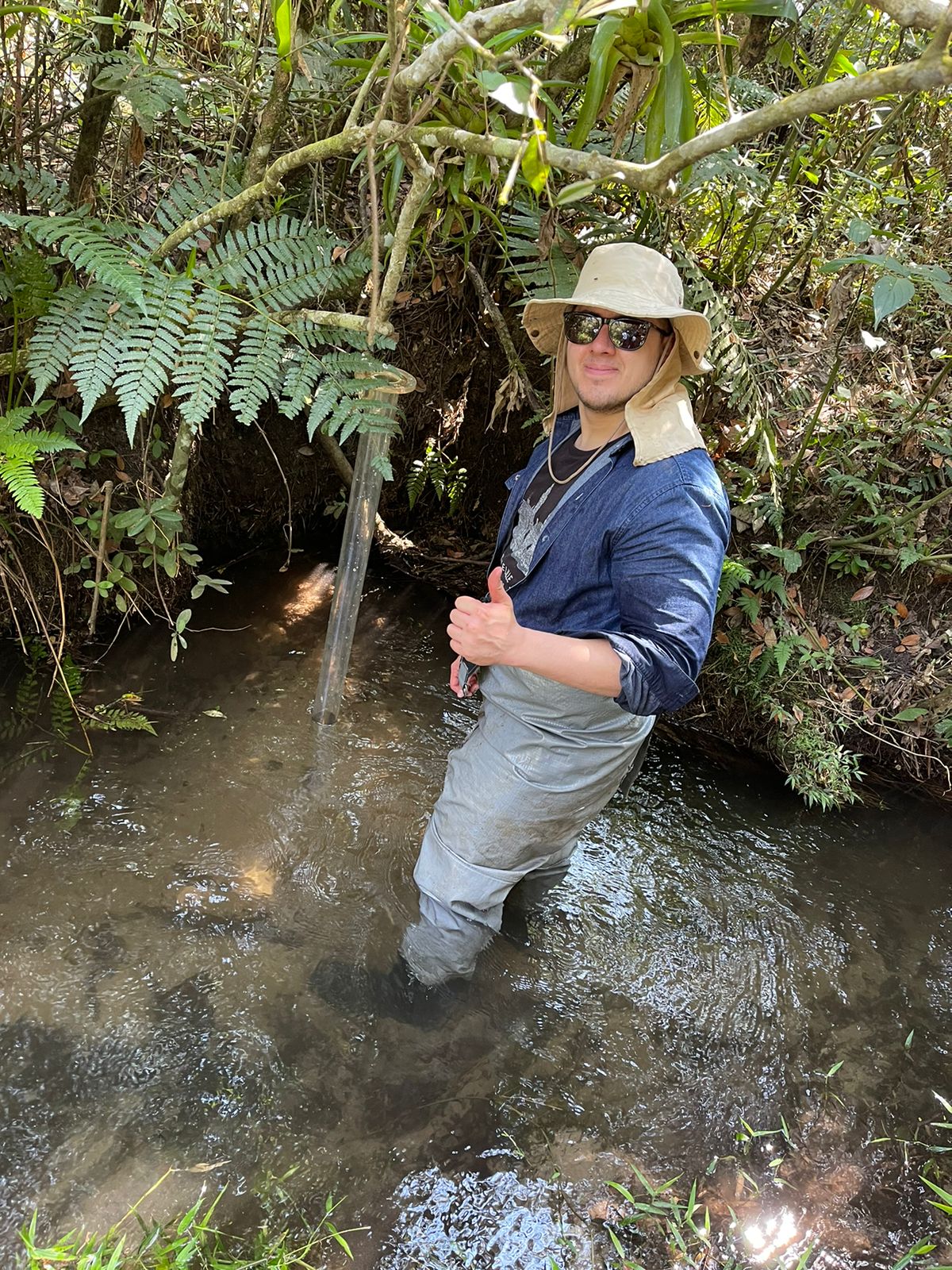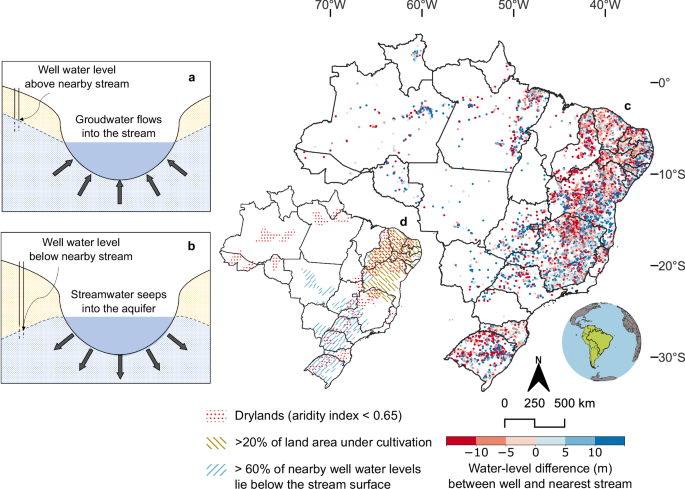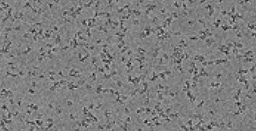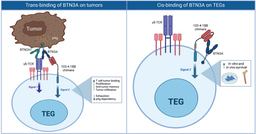Brazilian Rivers May Be Leaking Water into The Ground More Than Previously Realized
Published in Earth & Environment and Civil Engineering
Rivers are not isolated features, they are fed by rainfall and, especially during the dry season, by groundwater from underlying aquifers. This interaction allows a river to remain perennial, meaning they maintain a discharge throughout the year, even during dry periods. However, this interaction can also occur in the opposite direction, where river water seeps into the aquifers. Understanding the direction of these flows is crucial for developing local relevant water policies, given their importance in sustaining ecosystems, supporting water demands for cities and agriculture, and contributing to energy production and cultural activities.
Despite the importance of understanding river-aquifer flows for economic and environmental reasons, Brazil has not yet conducted a national-scale measurement of groundwater and river levels that can identify ‘gaining rivers’ (those that gain flow as groundwater flows into them) from ‘losing rivers’ (those that river water seeps into the subsurface). Meanwhile, the water demand continues to grow, particularly with the expansion of agricultural activities. Indeed, Brazilian National Water and Sanitation Agency projections anticipate that irrigated land areas will increase by more than 50% over the next 20 years. Therefore, understanding these river-aquifer interactions is essential for ensuring the sustainability of Brazil’s water resources.

To assess the flow direction between rivers and aquifers, we compared the elevation of each well water level to the elevation of the nearest stream water level. This analysis required compiling a national-scale database of well water level measurements. In collaboration with the Geological Survey of Brazil, we aggregated data from nearly 350,000 wells, identifying around 146,000 wells with sufficient information for our analysis.
We found that around 55% of these wells have water levels that lie below the nearest river's water level, implying that river water may seep from the channel into the underlying aquifer. In some parts of Brazil, this percentage of losing rivers could exceed 60%, especially in the São Francisco River Basin, which is renowned for its large agricultural and hydropower electricity production sector. As Brazil plays a critical role in global food security, being one of the world’s largest agricultural producers, the results alert for the development of studies on the interaction between rivers and aquifers in the region.
We also mapped the distribution of losing rivers across Brazil and found that they are more prevalent in drylands, particularly in areas under intensive agriculture cultivation. Our data indicated that losing rivers are more common in areas with extensive groundwater pumping, suggesting that the approval of new groundwater extraction projects should consider their impact on surface water.
Our research challenges the assumption that rivers outside of Brazil’s drylands are predominantly gaining rivers. It highlights the need for groundwater allocation policies to account for river-aquifer interactions and existing surface water usage to manage water availability effectively. This study calls for a shift in water management practices in Brazil to better reflect the interconnected nature of surface and groundwater resources.

Follow the Topic
-
Nature Communications

An open access, multidisciplinary journal dedicated to publishing high-quality research in all areas of the biological, health, physical, chemical and Earth sciences.
Related Collections
With Collections, you can get published faster and increase your visibility.
Women's Health
Publishing Model: Hybrid
Deadline: Ongoing
Advances in neurodegenerative diseases
Publishing Model: Hybrid
Deadline: Dec 24, 2025





Please sign in or register for FREE
If you are a registered user on Research Communities by Springer Nature, please sign in